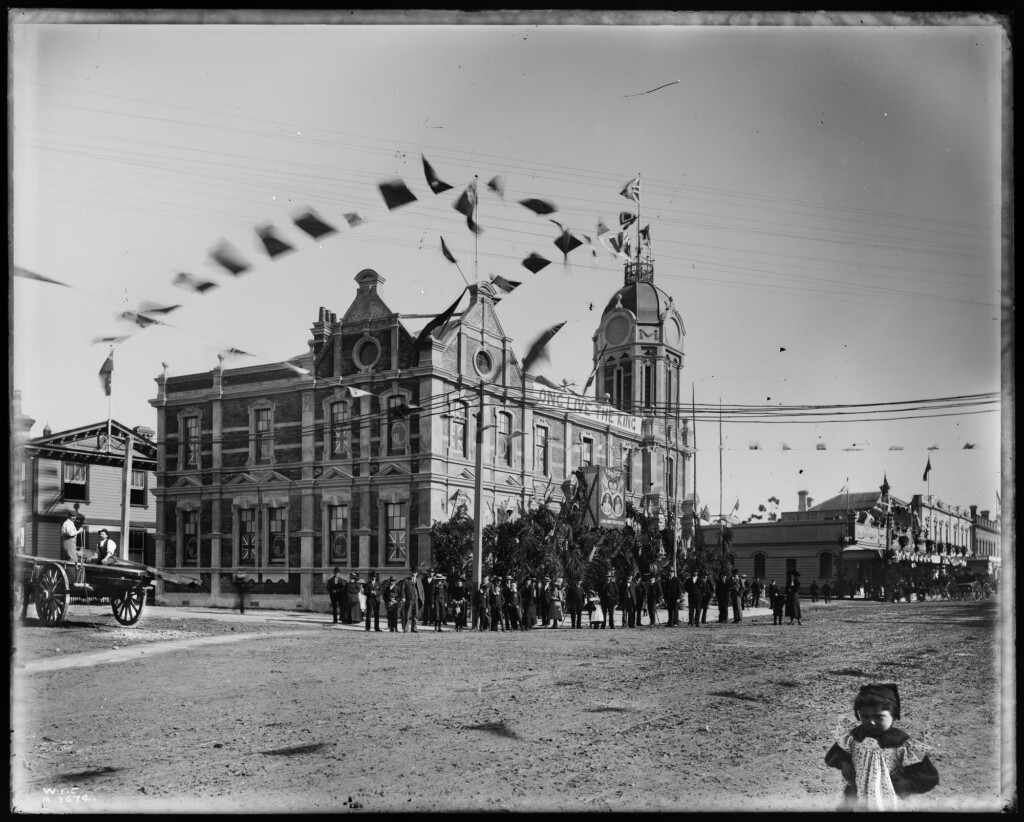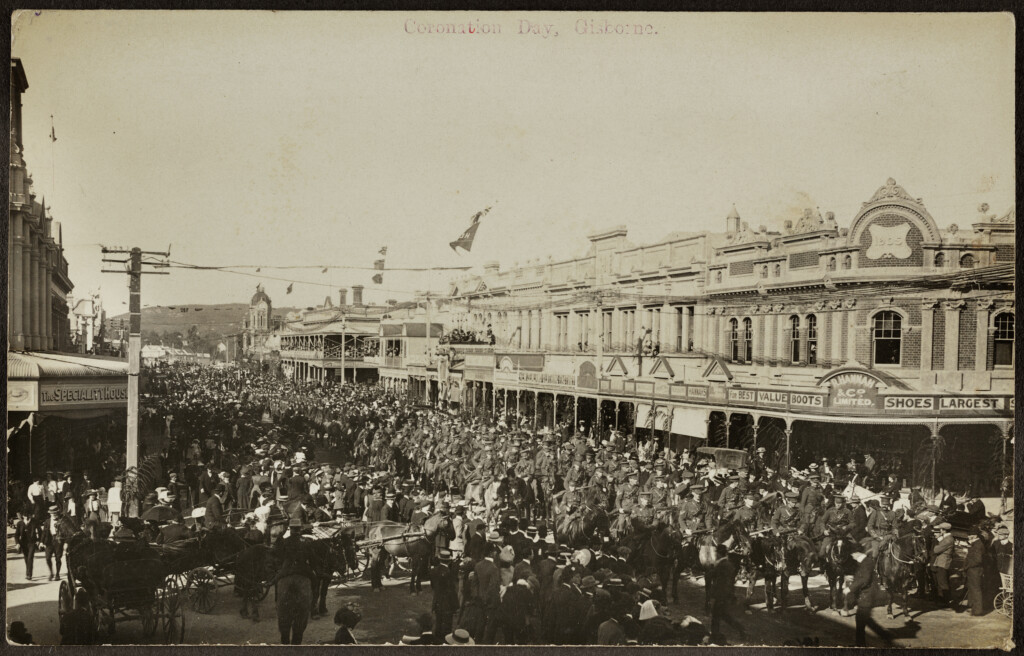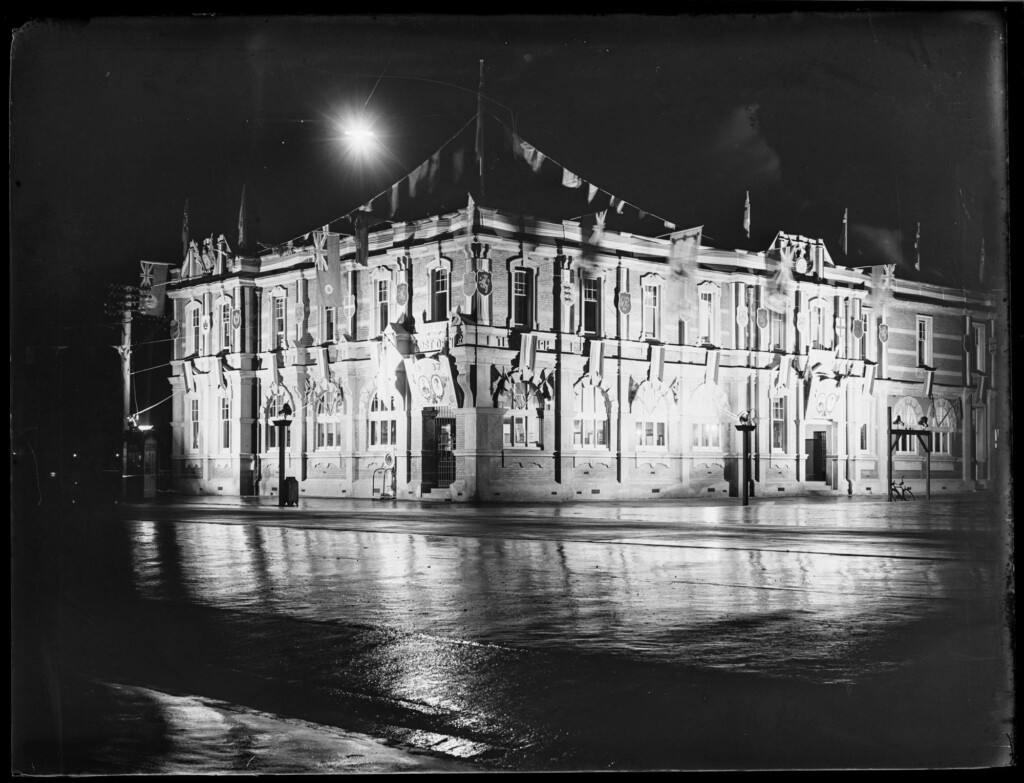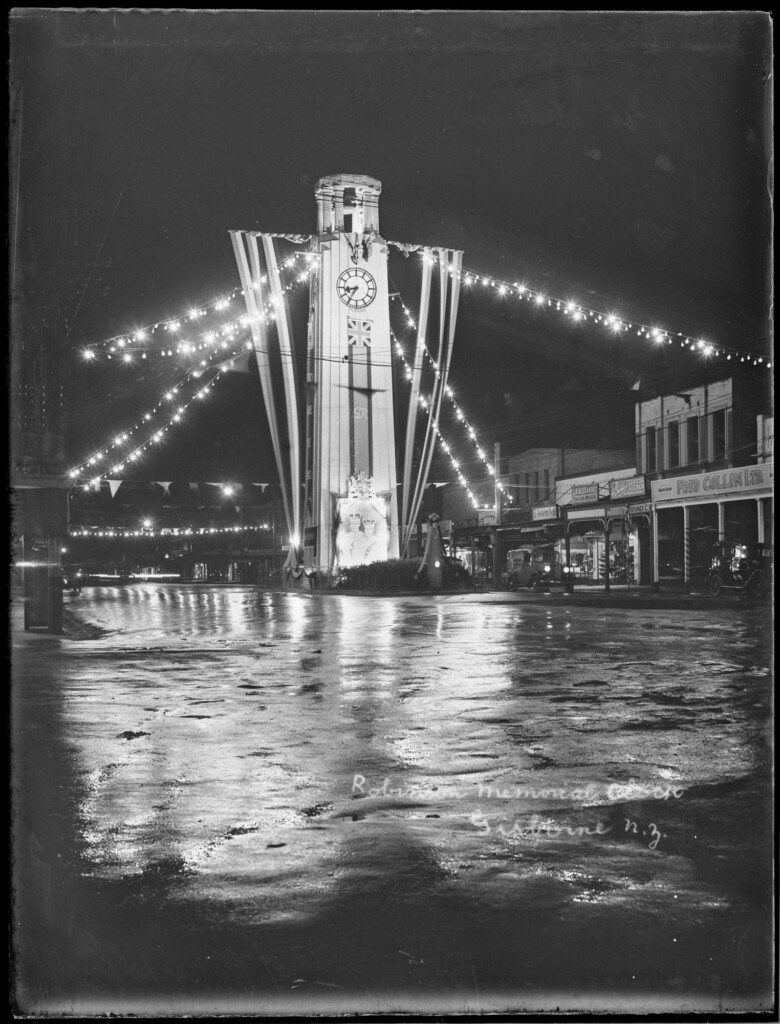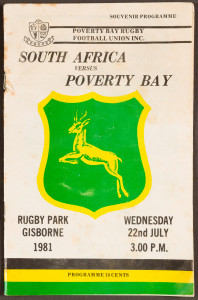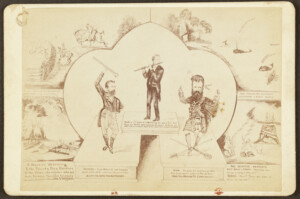Coronation celebrations in Gisborne
Coronation celebrations in Gisborne
written by Christine Page, Archivist
In the days before radio and television people gathered in public to mourn, celebrate or commemorate notable events. When Victoria died in January 1901, the local churches were literally overflowing as people flocked to attend memorial services. As she had been the only sovereign most people had known, there was much interest in the accession and coronation of her successor. The Mayor of Gisborne expressed the general feeling when he said “This is the first Coronation we have ever enjoyed, and let us be jolly of it.”[1]
The coronation of Edward VII took place in London on the 9th of August 1902, but full details of the event did not reach Gisborne immediately, for reasons which are all too familiar: “the telegraph wire which connects Gisborne with the outside world suddenly snapped as a result of damage caused by the gale.”[2]
Lack of information regarding the actual event did nothing to dampen the local festivities. The Coronation Celebration Committee had been at work since May planning a series of events. Special trains were laid on and bands played throughout the day which began with a service at Holy Trinity. A “Monster Procession” left the Post Office just after 11 o’clock and proceeded to the Domain (now the Botanical Gardens). After the military display and sports matches in the afternoon came the highlight of the day – the illuminations. Business and home owners were asked to illuminate their properties, country people were asked to light bonfires on the hills. A torchlight procession began at 7 o’clock and a large bonfire was lit on the river side of Reads Quay. This was to be followed by an illuminated aquatic display on the rivers. Given that a strong westerly wind was blowing at the time, it is amazing that there weren’t any serious fires, however the wind did play havoc with the illuminations, as most of them were reliant on gas jets. In spite of this, the decorations were much admired, particularly those of the new Post Office. The displays in the windows of Adair Bros. were notable for their use of electric light, still regarded as a novelty, and “the firm’s enterprise was applauded”.[3]
Edward died on the 6th May 1910, and was succeeded by George V, whose coronation took place on the 22nd June 1911. Once again streamers and flags fluttered along Gladstone Road, business premises were decorated, and the Post Office was decked out with arches of greenery interlaced with ribbons and bunting. However the procession which followed the church service did not go quite as planned: the volleys of rifle fire “caused consternation amongst a section of the horses”, resulting in many vehicles being scattered among the crowds. Amazingly, no damage was done.[4] The fireworks display planned for later that day was also eventful: it is thought that sparks from a Catherine wheel ignited the stacked fireworks, resulting in an explosion. An innocent bystander was hit by a rocket and was fortunate not to have been more severely injured. That was the end of the display, and a disappointing end to the day, particularly for the country people who had decided to wait for the late train. But apparently some of them made the most of being in town, and went off to the skating rink or movies instead.
George V died on 20th January 1936. Edward VIII abdicated in December. The coronation of George VI took place on 12th May 1937. The task of organising the local celebrations was delegated to the Gisborne Thirty Thousand Club, and a tentative programme drawn up which included a procession, a gathering at the Oval, and a carnival in Gladstone Road. However by mid April the increase in cases of infantile paralysis (polio) lead the Health and Education Departments to close all schools on the East Coast. A fortnight later the decision was made to abandon all forms of public assembly. Although it was disappointing, the Mayor reminded those at the meeting that up until the celebration of Armistice Day in November 1918, “Gisborne had escaped the worst effects of the influenza, but after the enormous gatherings of that day, the epidemic spread like wildfire through the district. I feel that we can’t risk another situation like that.”[5] It was decided that in that case, the Mayor and the Cook County Chairman would broadcast their addresses from the local radio station, 2ZJ. However, the decoration of the town went ahead as planned. The week before the coronation Winifred Lysnar wrote in her diary that “the town looks quite gay” – it had been decorated with rows of pennants recycled from the visit of the Duke of Gloucester in 1934, with extra flags added.[6] On this occasion both the Post Office and the Clock Tower were illuminated. Winifred thought that the flood-lit Post Office looked “splendid with huge flags on poles over footpath”.
George VI died on 6th February 1952. The coronation of Elizabeth II took place on the 2nd of June, 1953. Members of the Victoria League organised a dinner (considered an outstanding success) for themselves and their husbands at Lowe’s tea rooms which had been decorated with poinsettias flown in from Tauranga. Local dignitaries also attended.[7] Far more households had radios by then – there was no longer the need – or, perhaps quite the same inclination, for the mass gatherings of the past.
Nevertheless, a large crowd still gathered to watch the procession of bands, Air Force and Army personnel, Veteran soldiers and school pupils who marched down Gladstone Road to mark the occasion.
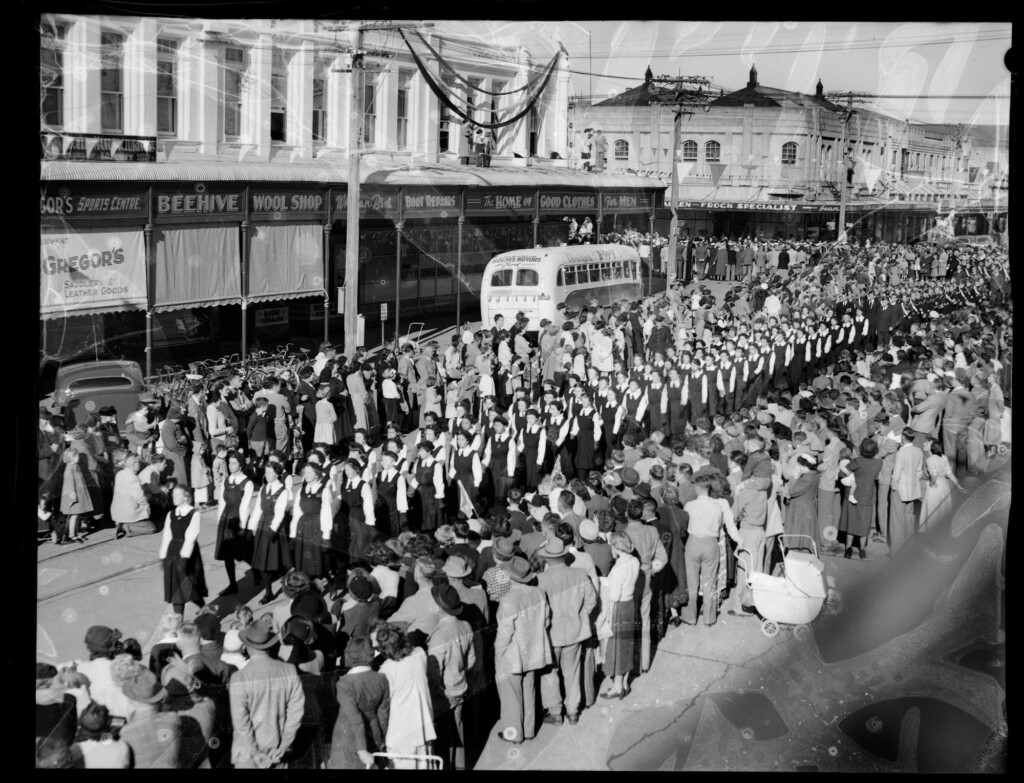
Coronation Procession, school girls marching, Gladstone Road near Bright Street, Gisborne, June 1953, Ellworthy Doddrell, [42688]
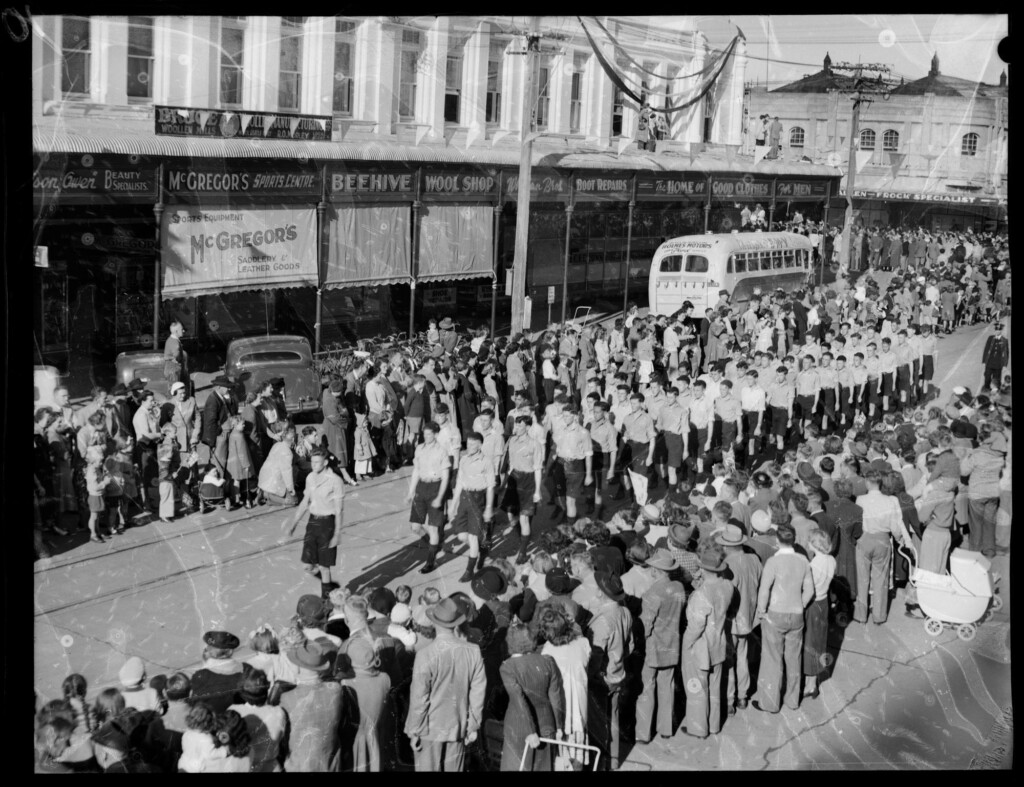
Coronation Procession, school boys marching, Gladstone Road near Bright Street, Gisborne, June 1953, Ellworthy Doddrell, [42686]
[1] Poverty Bay Herald 2 August 1902
[2] Gisborne Times 11 August 1902
[3] Poverty Bay Herald 11 Augsust 1902
[4] Poverty Bay Herald 23 June 1911
[5] Poverty Bay Herald 28 April 1937
[6] Lysnar, W. Diary entry 5 May 1937
[7] Victoria League records, 1953

